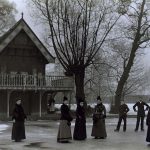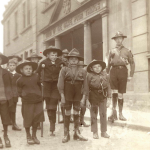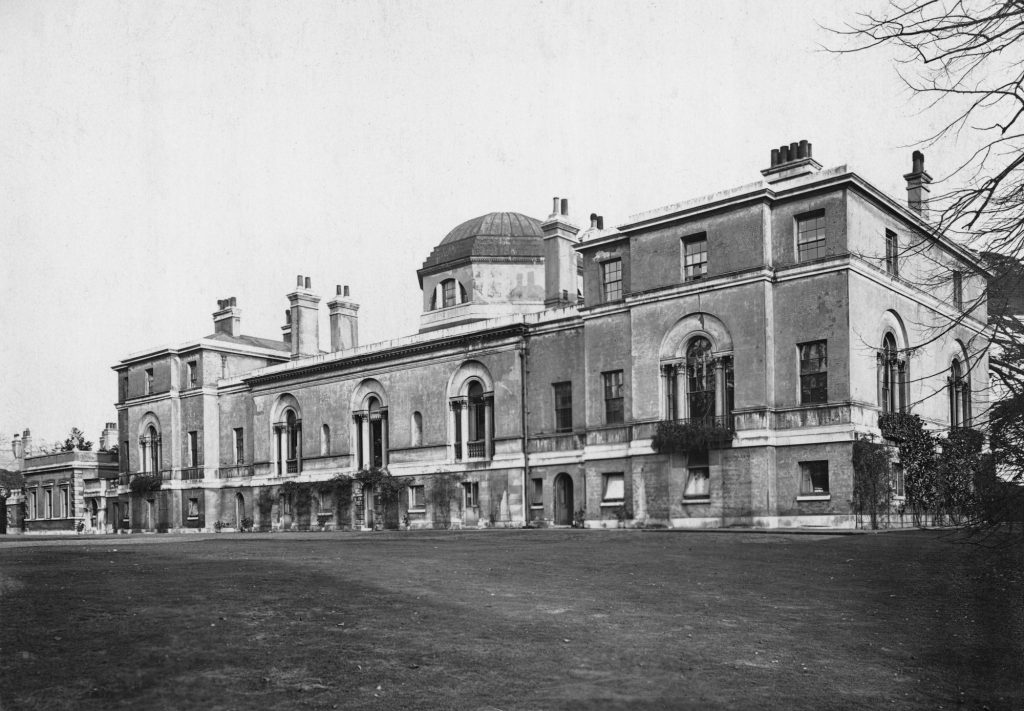First signs of a problem
In the handwritten pages of the Chiswick House case books we see fascinating glimpses of a bygone era in British society. The mixture of illegible scrawls and flowing scripts describe patients with varying symptoms who were all considered to be suffering from what was at the time loosely termed as insanity. For some this was a brief chapter, while others had a more long term struggle with their mental health.
Mrs Alice Mary Lillie was admitted to Chiswick House at the age of 47 in November 1914, a few months into the First World War. A resident of Folkestone in Kent, for the past 18 months she had been experiencing delusions. These ranged from believing she was being hypnotised at a distance by strangers and accusing her husband of a dubious sexual nature, to claiming that she was in fact Alice Meynell, the celebrated English poet and essayist.
While initially she had been able to continue “to manage the house and children”, in later months she had abandoned both for the art galleries and stores of London, telling no one and failing to leave any contact details. After 10 days she was finally discovered by her husband and the police, enjoying her break at the luxury St Ermin’s Hotel in Westminster. Having now read a number of different patient case notes, it seems that the capital’s numerous illustrious hotels were often a haven for England’s troubled Victorian and Edwardian upper-middle classes.
It seems that the capital’s numerous illustrious hotels were often a haven for England’s troubled Victorian and Edwardian upper-middle classes.
Alice’s husband George Ernest Lillie, a civil engineer based in Egypt throughout the war, had been asked to return to England with some urgency to help find his wife. She had left her sons Cecil (13) and William (10) without warning and was apparently “calm and indifferent” about the whole affair, appearing “to take it all as a matter of no importance”. On her arrival at Chiswick House, Dr Charles Molesworth Tuke notes that she spoke of having “perfect peace” and of being “perfectly happy”. He also mentions a number of times that she is experiencing the “change of life.”
Early days in Chiswick House
During the first few months of her stay, Alice preferred not to mix with the other patients or discuss her delusions with the doctors. “Maintains haughty attitude”; “rather silent and standoffish” ; “she does not say much today and is rather sulky and silent,” recall the notes of those who cared for her at this time. Resolutely antisocial, at one point she described her fellow patients as “septic.”
Alice also avoided maintaining contact with her family and friends, ignoring her husband’s letters and giving most visitors a frosty reception. Notes kept for March 10, 1915 recall a typical episode. “Today a lady Mrs Price called to see her. This lady brought her up as a child and has been till lately in the most intimate terms. I told her that I feared Mrs Lillie would refuse to see her if she were asked and that she had better be taken up to her room. Mrs Lillie was quite averse to speaking and received her indignantly and refused to talk with her at all. Mrs Price tells me that Mrs Lillie is quite altered in manner and expressions. That she used to be most cordial and “sweet” in manner to her. Mrs Price has seen her in a most deluded condition before admission here, and told me that it is evident that there is little change. Mrs Price offers to come again at any time if Mrs Lillie expresses any wish to see her. “
One visitor who Alice welcomed more warmly, if not maternally, was her eldest son Cecil, who visited her twice in 1916 before leaving England for the Indian Army.
Safe but not sound
Things didn’t really change over the next few years for Mrs Lillie, as she retreated from real life into her delusions. The most powerful delusion for Alice was that she was a French princess, and from the summer of 1915 she often spoke either in broken French or with a French accent.
The most powerful delusion for Alice was that she was a French princess, and from the summer of 1915 she often spoke either in broken French or with a French accent.
Whether they were a worry, stress or an embarrassment to their families (and quietly removed from polite society), patients at Chiswick were lucky enough to be cared for in rather genteel surroundings and still treated as ladies and gentlemen. In stark contrast, those who couldn’t afford private care could find themselves incarcerated in a county asylum where they would most likely be isolated and restrained in prison-like conditions.
As was the Chiswick House way, Alice’s treatment consisted mainly of good food, comfortable rooms, a choice of pleasant leisure activities and plenty of exercise in the grounds. Nice for a weekend mini-break perhaps, but unfortunately not effective treatment for a form of psychosis.
Alice’s physical health improved though (after a brief spell of refusing to eat), and she enjoyed drawing, painting, singing and playing the piano as well as hours walking in the gardens in her high heels. For a while she was writing her own version of Alice in Wonderland, in which she was Alice.
As the Great War reached its conclusion, Chiswick doctors reported on October 4, 1918, somewhat ironically, that, “She is suffering from delusional insanity. She thinks she is a Royal Princess. Will not have anything to do with her family and puts her husband’s letters in the fire without opening them. She is in good health.”
From Chiswick House to Springfield House
In the final entry for Alice we discover that she was transferred to “Dr Bower’s at Bedford” on June 20, 1919. Dr Bower was an energetic Scottish doctor who owned Springfield House private asylum in Kempston, Bedfordshire. Bower advocated an “employment system”, encouraging patients to take part in activities such as gardening and embroidery as well as leisure pursuits.
Interestingly, Springfield House had been built in 1837 when the local county asylum stopped accepting private patients. Initially it was to be located next to the main asylum, but the Medical Superintendent had concerns that “…between the patients’ yards there would only be a narrow close bounded by a brick wall and that the language of many of the patients is such that he could not place his private patients within hearing…” Apparently private patients were a much better class of lunatic.
Alice remained at Springfield as a private patient until November 1931, when she had reached her mid-60s. She then became a voluntary patient until February 1932, at which time she was discharged to an address in Great Yarmouth, Norfolk. Within two weeks she had died.
Looking at her symptoms, it is possible that Alice Lillie may have suffered from some form of schizophrenia. The precise cause of schizophrenia is still unknown, but it’s agreed that a combination of genetic and environmental factors contribute to the illness. Some people are more predisposed to developing the condition, which can be triggered by certain situations including stressful or life-changing events. In Part 2 I research Alice’s life before Chiswick House and uncover events that may have contributed to her developing this severe mental illness.










